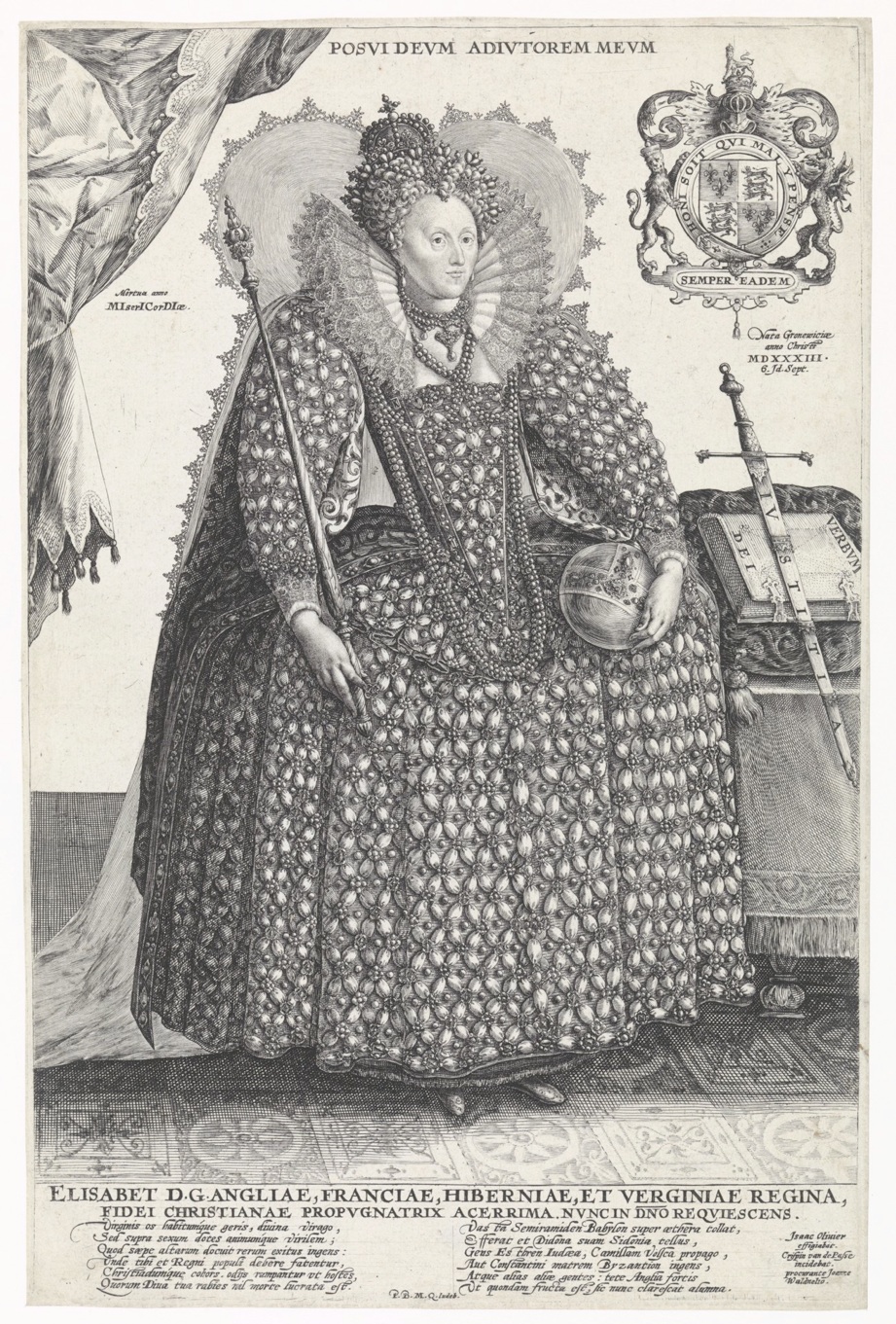Portret van Elizabeth I Tudor, koningin van Engeland, Crispijn van de Passe (I), Monogrammist PBMQ, Joanne Waldnelio, na 1603 - voor 1620
John Johnson - The Flatt Pavin - duo for two lutes
Hans Meijer & Hans Meijer lutes
JOHN JOHNSON
(1540 - 1594)
John Johnson, like most English Court musicians, probably began his career as a boy serving an apprenticeship to a player engaged in a great noble house, possibly that of the Earl of Leicester. This would normally last for seven years, and may have begun as soon as the early 1560s. One extant indenture, for a lutenist of a later generation, Daniel Bachelar, records that the boy entered his apprenticeship at the tender age of seven, and there is nothing to suggest that this was unusual. The system was essential for any musician of low birth aspiring to a Court post, for it provided the crucial patronage and personal contacts which would otherwise be totally out of reach, however prodigious his talent. In 1577 Johnson entered Royal service as one of Her Majesty’s Musicians for the three lutes. Together with Mathias Mason and Thomas Cardell, appointed around the same time, Johnson was among the first group of native English players to win the Royal accolade. The roster of lutenists formally engaged in that capacity by Elizabeth at times eventually rose as high as six or seven, and more lute players were employed in other posts, while extras were doubtless taken on as required for special occasions such as Court masques. Thus Johnson joined the Court just when his instruments time seems to have come.
Johnsons lute playing must have been exceptional, but his historical importance resides, of course, in the quality and quantity of music by him that has come down to us today. While we have a few fine compositions by native English lutenists before him, John Johnson can reasonably be regarded as the founder of the school of English lute music of the Golden Age which was to culminate in the work of John Dowland (1563-1626). Johnson absorbed both the prevailing Italianate style and a more idiosyncratically English taste to produce a substantial body of work of real distinction. His music is found, almost always anonymously, in manuscripts from all over Europe, to an extent only matched (and greatly exceeded, it must be said) by John Dowlands, yet, as far as we know, Johnson never left England. John Johnson, Queen Elizabeths favourite lutenist, died in 1594, when the Golden Age school of lutenists was at its zenith.
The Elizabethans loved music, and Elizabeth was no exception. She was a skilled musician and played the virginals and the lute. She enjoyed musical entertainments, encouraged musicians and composers, and was especially fond of dancing. She would dance the difficult and demanding dance, The Galliard, every morning to keep herself fit. She also loved to dance with her courtiers, and was fond of The Volta. In this dance, the ladies elegantly jumped high in the air, although not everyone believed it was elegant, as some people thought it was disgraceful as the women showed their knees. Robert Dudley also loved to dance, and he and Elizabeth danced as well together as they rode. A dance was even named after him, “The Leicester Dance”. As she got older and could not dance as much as she used to, Elizabeth enjoyed watching her ladies dance. Elizabeth also liked to sing and reputedly sang well.
Elizabeth was also a patron of arts and literature, and loved watching plays, masques, and other dramatic performances. She had her own company of actors, called “The Queen's Players”, and these would often perform plays for her and her courtiers. Robert Dudley also had his own company, and he would pay them to perform before the Queen.
Elizabeth was also an incredibly gifted scholar, and loved learning. She reputedly would often study for two or three hours a day, and was well read in the Classics, as well as having a very extensive knowledge of history. Her skill for languages meant that she could read books in Latin or French, and especially as she grew older, she loved to translate Classic works into English. She also liked to write poetry, and a few of her poems still survive.



